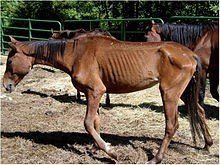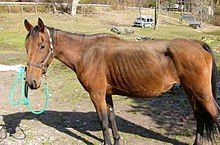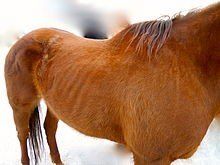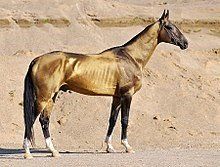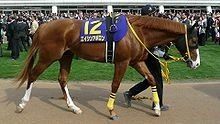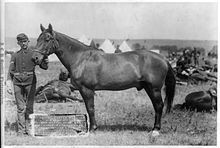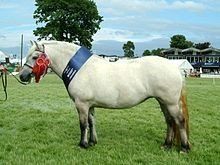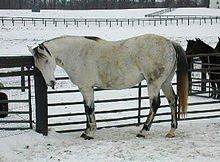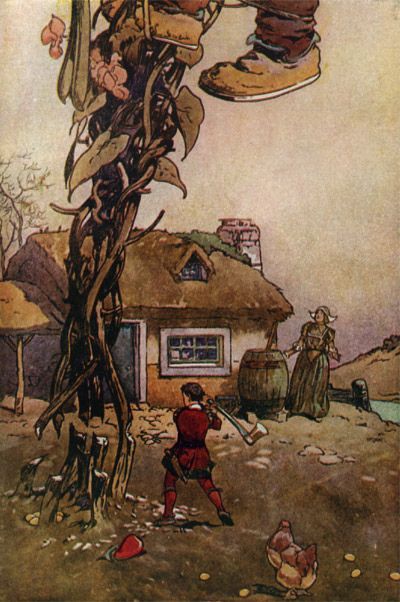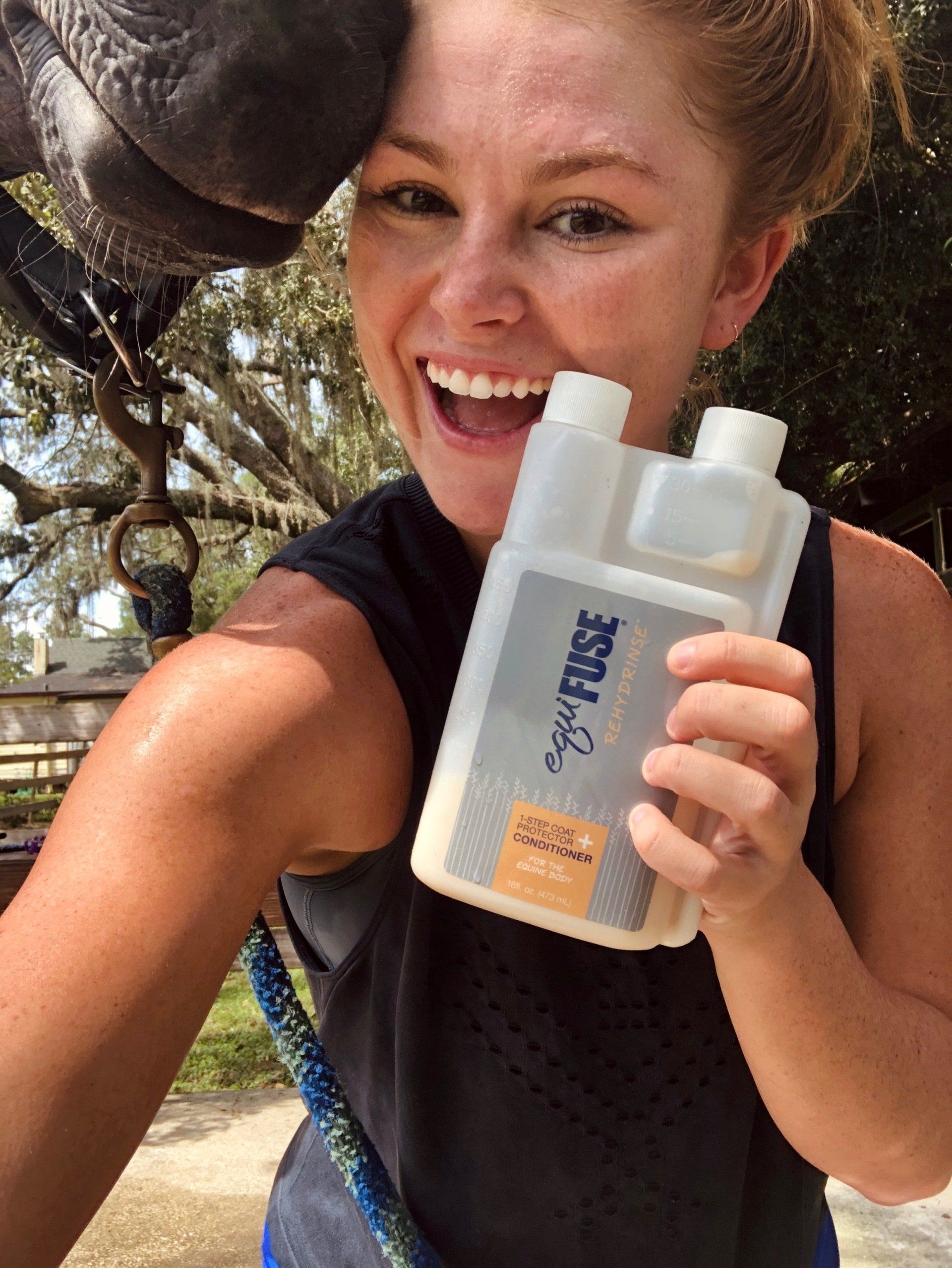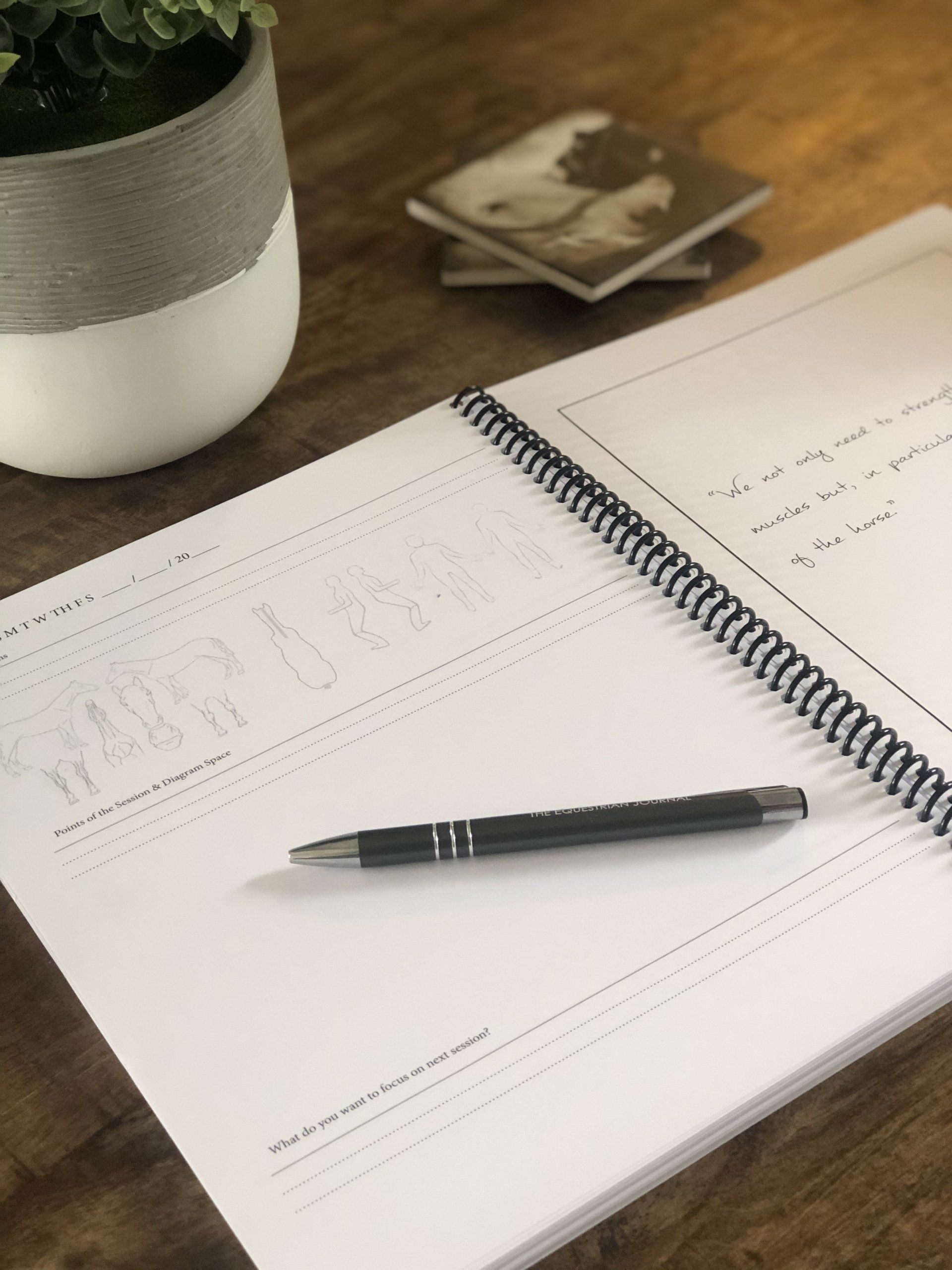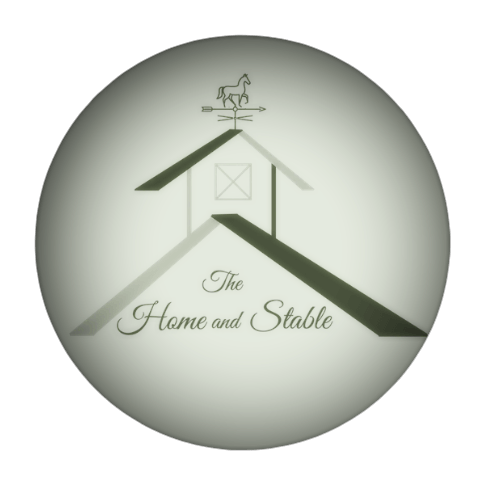The average horse is healthiest with a body condition score between 4 and 5 (breed dependent), which indicates that the horse has a proper balance of feed to exercise. An easy keeper or hard keeper should be watched closely as they are prone to either being overweight or underweight, respectively.
Breeding mares
Breeding mares with a body condition score less than five have been linked in research to problems with reproduction. The energy demands of milk production for a foal are very high, so most mares will lose condition while lactating. Also, a mare with a body condition score less than five will have more difficulty conceiving. For these reasons, recommendations are for breeding mares to score between 6 and 7. Higher body condition scores have not been shown to affect reproduction but are unhealthy for the horse.
Stallions
Stallions have the best reproductive success at a body condition score of 5 or 6. Stallions have a high energy output during breeding season so some advise a stallion begin the breeding season at a 6 or 7 to keep him within the healthy range at the end of the breeding season. If a stallion has a body condition score less than 3 or greater than 8, reproductive performance is compromised.
Performance horses
There has not been much research on the connection between body condition score and performance ability in horses so optimum scores are unknown. However, horses with a low body condition score lack the fat reserves for strenuous work and also may lack lean muscle. Horses with a very high body condition score carry too much weight, which interferes with stamina and biomechanics.
Horses on winter pasture
Horses on pasture should enter the winter season at a body condition score of 6 or 7. On extremely cold days, a horse cannot eat enough food to balance the energy requirements of maintaining body heat so condition is often lost over winter.
Hopefully, this answered some questions and further established your understanding of your horse's body condition. Follow up with your vet on their next visit to review your findings and address any deficiencies.
-Excerpt from Wikipedia and Associated Resources

